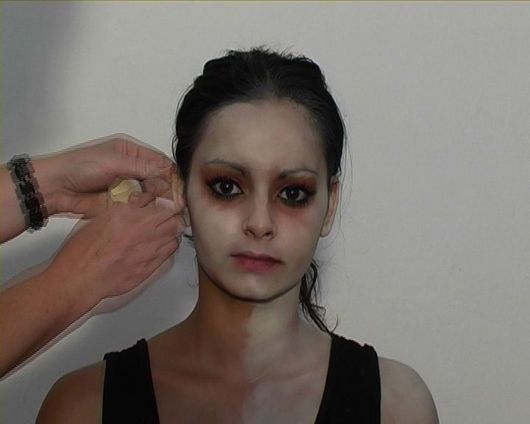Program 8 / Part 2 / Friday, June 21, 2013, 7 p.m., Shedhalle
Making an image for oneself
In societies that attribute people’s “ethnic” ascription great value and link their social status to it, immense psychic and physical work is required of those labeled as the “Others.” This work involves attempting to move away from racist ascriptions and be perceived as a “normal” part of majority society, or to counter and refuse ascriptions and actively deal with and refute the associated racists devaluation or “added value” gained through “exoticizing.” On the two evenings of the film program, 19 and 21 June, strategies of “Becoming White” or “Becoming Invisible” as well as “Outings” and “being different” will be up for discussion.
Part 2
Insights into Outer Appearances: Cinematic Statements on the Visuality of Racism
Frantz Fanon, Black Skin White Mask: Isaac Julien, Production: Mark Nash / Arts Council of England, UK 1996, 73 min, English
Miss Roma: Tamara Moyzes, 2007, 1:40 min
The director, Tamara Moyzes, will be present at the screening.
Repression and racism have profound effects on the way that colonized and racially discriminated people construct themselves as subjects. Dominance reaches into the psyche of those who have been dominated: Frantz Fanon (1925–1961) formulates this theory in his book Black Skin, White Masks (1952), an epoch-making “Essay for the Disalienation of Blacks” as its first title stated.
Through the montage of archive material, interviews—among others, with Stuart Hall and Françoise Vergès—as well as fictional reconstructions, Isaac Julien’s film essay draws a complex image of Frantz Fanon in the context of decolonization and the Algerian War of Independence, and links this with current discourses of queer and post-colonial identities.
Tamara Moyzes’ video Miss Roma shows the donning of a “white mask.” The transformation of the woman protagonist stages the passage through a continuum of appearance, void of thresholds, within which racism erects its aesthetic borders and values. This “passing” plays with the “color line” and blurs it to the point of non-distinguishability.

